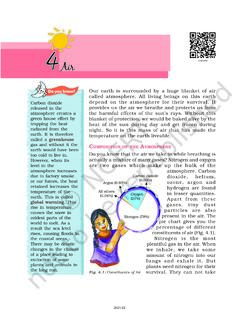Transcription of Teaching the Turtle Technique - SOESD
1 Teaching the Turtle Technique Ideas for helping children learn to control anger and manage impulses Environmental Supports Keep copies of the Turtle Story in your book area and read it frequently Post visuals of the Turtle Technique steps Include Turtle Technique steps in your solution kit (as a laminated poster, or a set of smaller cards on a ring) Use Tucker as a mascot for Teaching your classroom rules o Tucker s 3 T s I Take Care of Myself I Take Care of My Friends I Take Care of my Things Large Group Strategies Introducing the Turtle Technique Use a Turtle puppet. Give the puppet a name (or have the children name it we call our Turtle Tucker)). Use the puppet to illustrate the story of how Tucker has learned to tuck inside his shell, take deep breaths, relax, and think of a solution to his problems. We have found it more effective to tell the story rather than read it directly from the visuals available on the CSEFEL website, as you can adjust language as necessary for your group, ask children to make predictions and offer suggestions etc.
2 BE ANIMATED! Add an element of surprise ( storing puppet in a box and have children guess what s in the box before you introduce the puppet). Sing a song about Tucker Sing If You re Angry and You Know it (take a breath) Read Mouse Was Mad. Discuss how different animals in the story had different ways of dealing with their anger. Mouse uses deep breathing. (There are more ideas for extension activities in the CSEFEL Book Nook for this book). Read other books with themes of anger and self regulation Small Group Strategies Providing opportunities for practice Using a parachute, have children practice going inside their shells (under the parachute) to take 3 breaths. Group counts together 1, 2, 3, while floating the parachute up and down to represent breaths. Can do a similar activity using a stretchy body sox that the child crawls into to simulate Turtle shell. You could also make an inexpensive stretchy shell using jersey fabric or a jersey sheet. Make Turtle puppets using socks (that you can roll over the turtles head for tucking) Teach multiple ways to tuck o inside a box or calming area o inside your clothing o hands in front of face Read the Tucker the Turtle story, inserting conflict or problem examples, which are relevant to your specific classroom, and engage the children in problem solving brainstorming.
3 Teach specific breathing techniques, use visuals to make it more concrete o Smell the flower, blow the petals o pretzel o drain o STAR breathing (Stop, Take a breath And Relax) o balloon o feather on a string o blow bubbles Demonstrate and practice breathing techniques o Child lies on table or floor, place small stuffed animal on belly, breathe deeply enough to cause animal to fall off belly o Use a balloon pumper to blow up and release balloons. Children practice filling and releasing their own air (breaths) Read When Sophie Gets Molly Bang. o Make volcanoes (baking soda, vinegar, dish soap, food coloring) to illustrate explosion of feelings and release/relaxation from breathing. Relate the explosion and the fizzing out of the bubbles to how it feels when you re angry, and how breathing can help. (This idea was actually inspired by a child in our program, who, during the volcano making activity exclaimed Look! It s going away just like my anger. ) Large papier mache volcano Multiple volcanoes created with cups, plastic funnels in sensory table -this version traps the elements and results in a forceful spray pretty cool!
4 Fish bowl with volcano container inside Individual volcanoes made in Dixie cups set on trays o There are other extension ideas for this book in the CSEFEL Book Nook. Individual Strategies Reinforcing and sustaining the Teaching Keep a copy of the Turtle Story in your reading area and read it frequently Support children in using breathing techniques, and problem solving steps, during naturally occurring situations, and provide frequent encouragement and acknowledgement. Use breathing techniques in the moment to support children in de-escalating Send Tucker s Traveling Bag home with children. Backpack contains a Turtle puppet, the Tucker story, visuals, music, a journal for families to write in, a digital camera for families to take picture of their child with Tucker, and ideas for families to carry over the learning into the home. Write Social Stories to individualize anger management what are this child s triggers, and new responses the child needs to practice? Ideas from the Rogue Valley PBIS Leadership Team, and staff of SOESD Early Childhood Services in Josephine County, Southern Oregon Head Start, Child Development Services in Jackson County.
5








